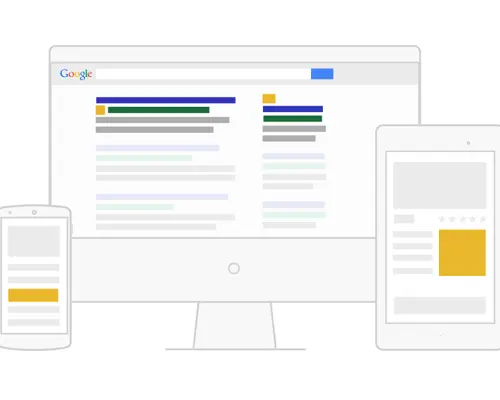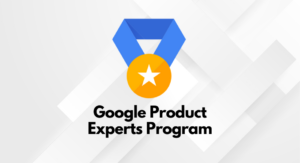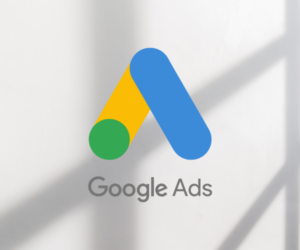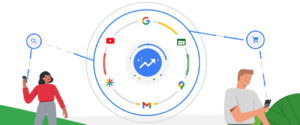Wondering how does AdWords work? How do the ad auction, bidding, and the complete pricing methodology keep advertisers, searchers, and Google in a healthy and mutually profitable ecosystem? Here’s the video from Hal Varian taken from the Official Google Small Business YouTube channel and I have transcribed it for the people who want to read than to watch.
Happy Learning! Over to Hal Varian.
https://www.youtube.com/watch?v=PjOHTFRaBWA
Hi, I am Hal Varian, I am the chief economist here at Google.
Google uses an auction system to rank the ads that appear in the search results page and to determine the cost for each ad click. In this talk, I’ll take you through a general overview of how the ad auction works.
First and foremost, Google users want ads they see to be relevant. They don’t want to be bothered with ads that are closely related to what they are searching for. And advertisers want to show relevant ads for users to actually click on them. In the meantime, Google wants to provide a good experience for users and a good value to advertisers so that they come back and use our services again in the future.
Now, I’d like to walk you through what a traditional auction looks like.
Say, we have four advertisers competing for space in the search results page and each has indicated a different amount they’re willing to pay for users to click there and visit their website – $4, $3, $2, and $1.
I refer to these amounts as the bids. Now, in traditional auction ad positions will be determined exclusively by bids. The highest bidder gets the first position, second highest bidder gets the second position and so on. Google uses a variation of what’s called a second price auction, and in second price auction, the buyer doesn’t have to pay their full bid. They only have to pay the amount of the next highest bidder below them.
So, in this particular case, the first advertiser was bidding $4, he only has to pay $3 which is the bid of the second highest advertiser. Same thing applies to advertiser two and advertiser three.
This design allows each advertiser to bid their true maximum willingness to pay for clicks but they only have to pay just enough to beat the competition.
Now, in our Google auction, advertisers only have to pay when they actually receive a click, and the order isn’t based just on bids. Why? Because we want to show more useful ads in a higher position on the results page. Because users want to see relevant ads, advertisers want to present relevant ads to users, and Google wants both advertisers and users to have a good experience so that they come back and continue to use our system.
We consider some other factors in addition to advertisers bid. The first factor is your expected click through rate. This is our prediction of how often your ads will be clicked on when shown. All across Google, we rely on user feedback to drive decision making, and user click-through rates tell us what Google users really responded. By allowing users to vote with their clicks, we have millions of people helping us to decide which ads are best for each search query.
The next factor is your ads’ landing page experience. An ad is only useful to users if the landing page it leads to helps them find what they are looking for. Highly relevant landing page yields a higher score.
What does a high-quality landing page look like? Well, you should have relevant and original content that helps the user complete their task. Should be easily navigable. Be transparent about the nature of your business… how your site interacts with a visitor’s computer and how you intend to use a visitor’s personal information.
Another factor that’s involved is ad relevance. Google determines ad relevance by analysing the language in your ad. They determine how ads relate to a query. This is a way to measure the ads’ relevance to the users’ searches and to make sure that only useful ads are shown. It also prevents advertisers from simply paying their way onto search that’s unrelated to their product or service.
Your Expected Click Through Rate, the Landing Page Experience, and the Ad Relevance are all factors that describe the quality of your ad. We also consider the expected impact of any ad formats that may show with your ad. Ad formats or enhancements to search ads that more prominently show users information about your business. Things like a phone number, site links or your website’s domain in the ad headline. Advertisements with these formats give users more information and more reasons to click on an ad.
So, Google combines your bid with multiple quality factors – Click Through Rate, the Landing Page, your ad relevancy as well as the expected impact of ad formats to calculate a score for your ad called Ad Rank.
Let’s go back to our four sample ad buyers and see how their ad ranks
compare. Here are four advertisers and they are bidding $4, $3, $2, and $1. Their ads have different quality, low, high, high, and medium.
They also apply different ad formats with varying impact. The first ad doesn’t have any formats enabled so it has no expected format impact. The second ad is only eligible for one format and as a low expected format impact, and the third is eligible for several extensions and garners the high expected impact. For the last ad, it is medium. So in this example, the first ad has an ad rank 5. Next ad has an ad rank of 15. The third has an ad rank of 20, and the last ad has an ad rank of 8.
It’s this ad ranks score that determines ad position on the results page, and in addition, only ads were sufficiently high ranked to appear at all. So with this ad, with an ad rank of 20, it gets the first position even though it has a lower bid. Why? Because of this quality and formats. The second-highest ad rank is 15 so that ad gets position two. The third highest ad rank is 8 and it lands in position three.
The advertiser up here who’s been bidding 4 dollars as such a low quality and format impact it doesn’t get a position on the page at all despite having the highest bid. So now you know how the ads are ranked. But how much do you actually pay for a click?
You pay the minimum amount that’s necessary to maintain your position and any formats that are shown with your ad.
So let’s get back to our ad rank table and talk about the advertiser position one. He’s competing with the advertiser position two. So the amount he has to pay is going to be just enough to beat the ad rank of the advertiser in position two. For example, although he bids two dollars, he could have bid as low as – say $1.73. It would still about rank the advertising media below him. So that’s what we’ll pay for a click – one dollar 73 cents.
Similarly, the amount that advertiser position at two has to pay is the minimum needed to beat the ad rank of the advertiser in position three, and so on down the page. So in this example, the top-ranked advertiser winds up paying less than what he was actually willing to pay for a click and it’s the same for the other advertisers as well.
All right, let’s talk about how advertisers can influence their cost per click and ranking in the auction. By improving your ad quality, by adding ad formats, you can potentially improve your ad position. You could also end up paying a lower cost per click.
So let’s take a look at the advertiser position two. Suppose she improves her ad and landing page, now her ad rank goes up to 18. Her position here doesn’t change but what happens to how much she pays per click. Before even though she bid three dollars, she only needed to bid say $2.68 to beat the ad rank of the advertiser immediately below her. So that’s what she paid – two dollars and sixty-eight cents. But now that she’s improved the quality of her ad, assuming everything else stays the same, she could have bid as low say – two dollars and 42 cents to beat the advertiser immediately below her. So her cost-per-click goes down to $2.42.
Why? Because the price an advertiser pays is partially based on her ad quality.
Now imagine this advertiser wants to move to a higher position, so she increases her bid to $3.50. Now her ad rank is up to 23, that’s enough to give her highest ad rank and to move her into position one. And what did she pay? The amount that would be just enough to beat the ad rank of 20 below her. Assuming everything else stays the same, that might be – say three dollars and thirty-eight cents in this particular case.
So, to wrap up, why do we handle ad ranking and pricing this way? Like I said at the beginning, it all goes back to the ecosystem Google, our users, and advertisers all live in. When users see better ads they’re happier and more likely to actually click on those ads and that makes advertisers happier which makes Google happy because with happy users and happy advertisers we get more people using our system. If you have more questions or what more information please visit adwords.google.com/support. Thanks for your attention.
Sharing is caring!







1 thought on “How Does AdWords Work? How Is CPC And Ad Positions Decided?”
Great helpfull